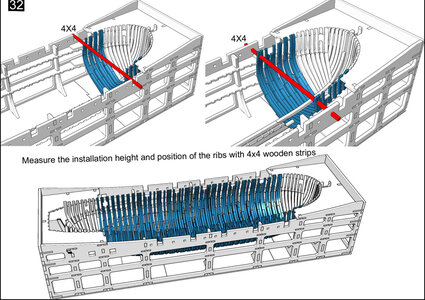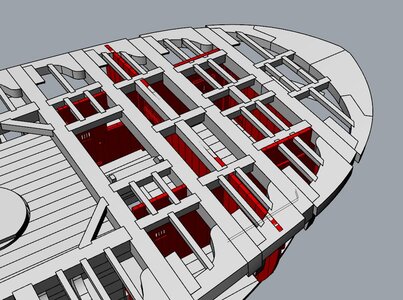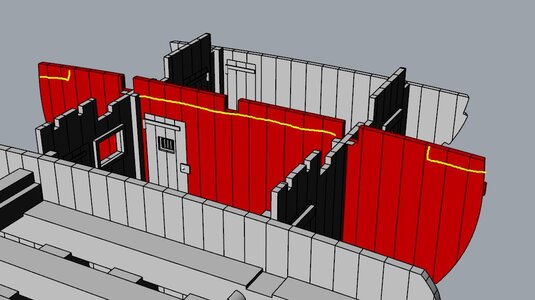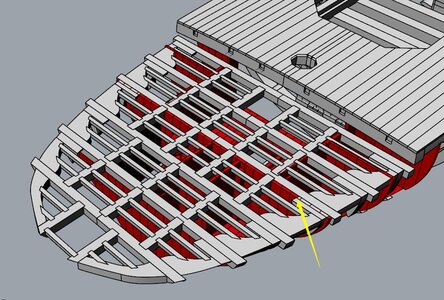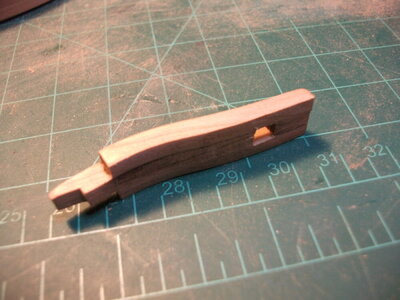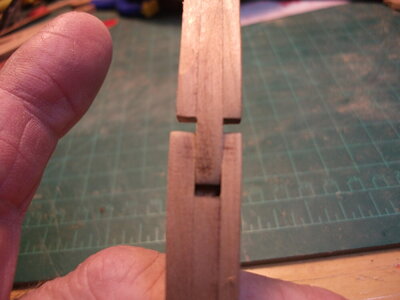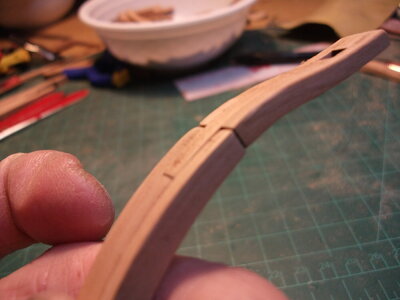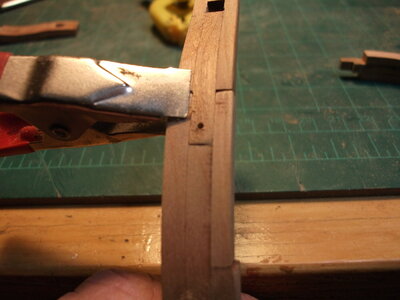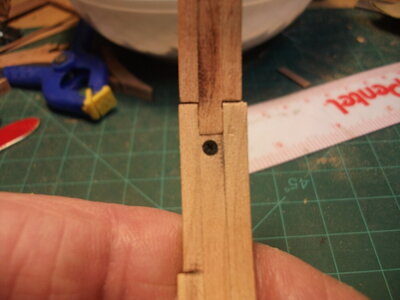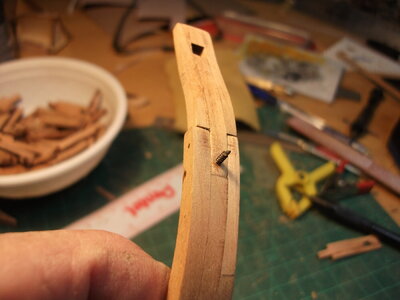Hope all had a Happy Thanksgiving and survived the holiday. Have been working on Part One of this CAF Granado kit for a while now. Part Two is waiting in the wings. Have completed all of the main ribs and have been impressed by the quality of the rib design and of the jig for assembly.
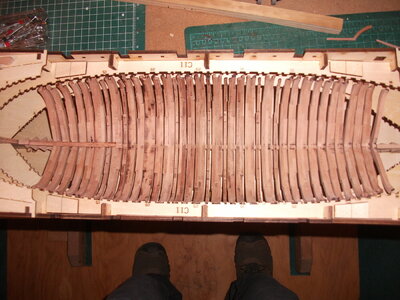
Everything is dry fit at this point as I get ready to tackle the trickier bow and stern rib structures. While checking the fit of the keelson pieces with the installed ribs, I noticed that ribs 8 through 15 sat too high on the keel and were impacting the fit of the forward keelson piece. During initial construction, these ribs require substantial sanding for contour and I was pretty careful to follow the lasered lines provided on each piece to get the contours right. Even so, I had this problem with ribs 8 through 15. Not sure if anyone else has seen this yet. My solution was to carve out a small channel in the inside bottom curve of the rib to accommodate the keelson. Rib 8 had the deepest cut and 15 had the shallowest. Below is rib 8 followed by rib 15

Below is rib 15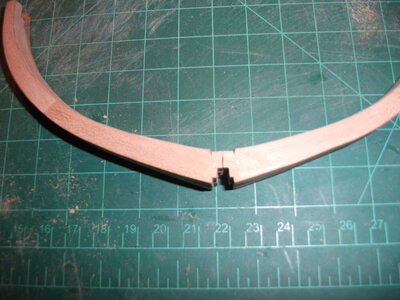
By making these mods, the forward keelson piece fits snugly against the top of the keel section at the bow. Not sure if I have bought myself problems down the road but this seems to be working for now. Ribs aft of nr 15 all ride nicely on the keel and the dry fit of the keelson is working well. Rib 9 and rib 44 are loose in the jig (have side to side play of about 5mm). When I checked against the plans, my rib 9 was spot on with the drawings, rib 44 looks to be my bust as it is slightly narrower than the drawing. Will sort that later.
Regarding the split hull issue on this kit, the instructions call for the use of pieces of wire to temporarily hold the upper pieces of the various rib sections in place with the lower sections while assembling the upper section. I have done some dry runs using scrap wood and have not had much luck. What has some promise is the use of railroad track screws which are about the perfect size.


I was able to get these on Amazon but they are carried in a variety of hobby/train shops. As shown on the box, they are 10mm in length and 1.4mm diameter. Phillips head. What I am hoping is that with these mini screws, I am going to get more "bite" in holding the small pieces together temporarily than I would with smooth pieces of wire. In any case, once these screws are removed, will have small holes to fill/dress (would have that issue with wire as well). I am going to try to muster the courage in the next few days to start drilling some holes in the ribs and putting this theory to the test. Would appreciate any comments/thoughts/better way if anyone has opinions to share.


Everything is dry fit at this point as I get ready to tackle the trickier bow and stern rib structures. While checking the fit of the keelson pieces with the installed ribs, I noticed that ribs 8 through 15 sat too high on the keel and were impacting the fit of the forward keelson piece. During initial construction, these ribs require substantial sanding for contour and I was pretty careful to follow the lasered lines provided on each piece to get the contours right. Even so, I had this problem with ribs 8 through 15. Not sure if anyone else has seen this yet. My solution was to carve out a small channel in the inside bottom curve of the rib to accommodate the keelson. Rib 8 had the deepest cut and 15 had the shallowest. Below is rib 8 followed by rib 15

Below is rib 15

By making these mods, the forward keelson piece fits snugly against the top of the keel section at the bow. Not sure if I have bought myself problems down the road but this seems to be working for now. Ribs aft of nr 15 all ride nicely on the keel and the dry fit of the keelson is working well. Rib 9 and rib 44 are loose in the jig (have side to side play of about 5mm). When I checked against the plans, my rib 9 was spot on with the drawings, rib 44 looks to be my bust as it is slightly narrower than the drawing. Will sort that later.
Regarding the split hull issue on this kit, the instructions call for the use of pieces of wire to temporarily hold the upper pieces of the various rib sections in place with the lower sections while assembling the upper section. I have done some dry runs using scrap wood and have not had much luck. What has some promise is the use of railroad track screws which are about the perfect size.


I was able to get these on Amazon but they are carried in a variety of hobby/train shops. As shown on the box, they are 10mm in length and 1.4mm diameter. Phillips head. What I am hoping is that with these mini screws, I am going to get more "bite" in holding the small pieces together temporarily than I would with smooth pieces of wire. In any case, once these screws are removed, will have small holes to fill/dress (would have that issue with wire as well). I am going to try to muster the courage in the next few days to start drilling some holes in the ribs and putting this theory to the test. Would appreciate any comments/thoughts/better way if anyone has opinions to share.







